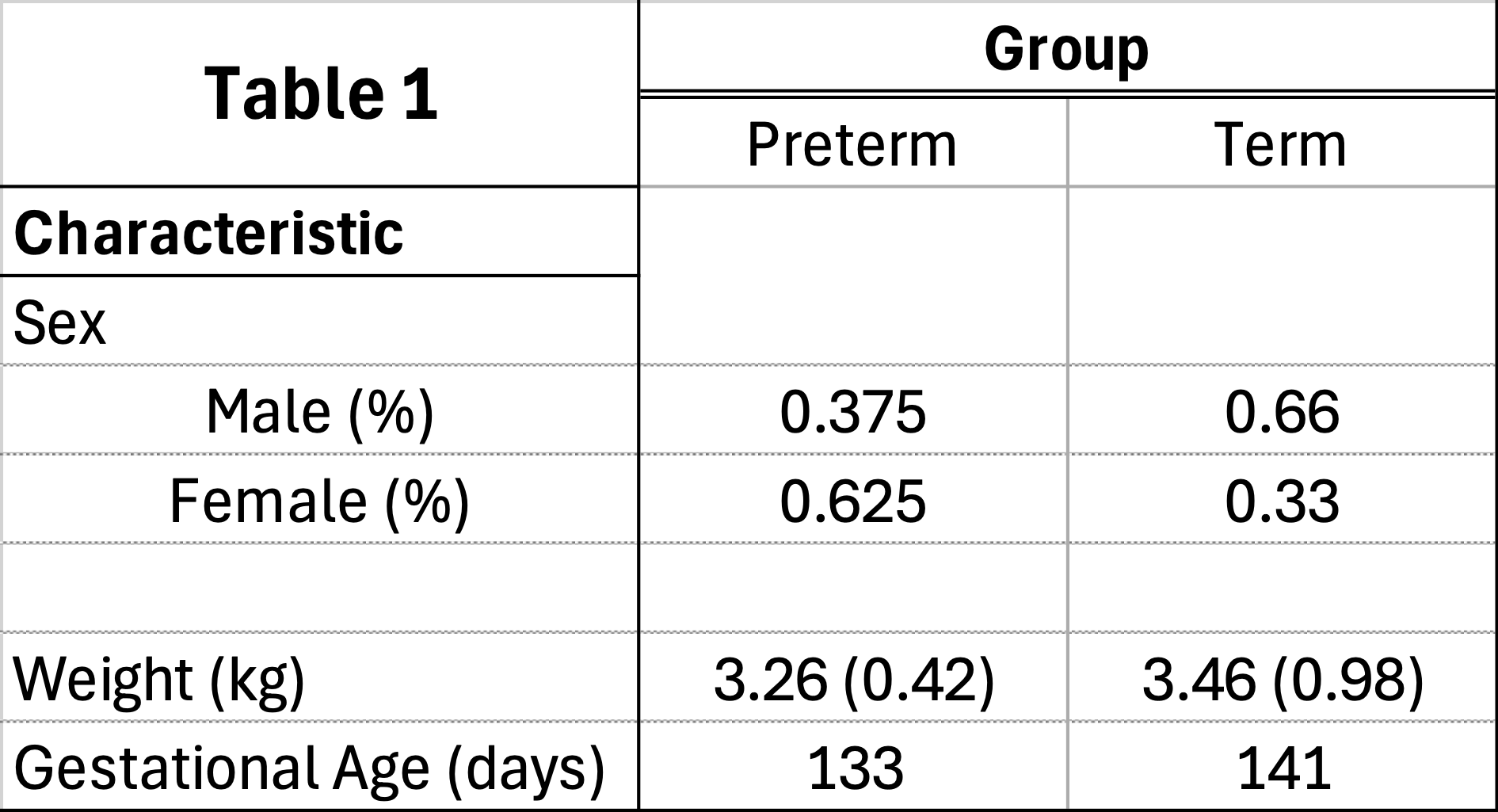Neonatal/Infant Resuscitation 1
Session: Neonatal/Infant Resuscitation 1
280 - Inspired Oxygen Concentrations Required to Achieve Normoxemia and Decrease Pulmonary Vascular Resistance in Asphyxiated Preterm vs Term Lambs with Meconium Aspiration
Friday, April 25, 2025
5:30pm - 7:45pm HST
Publication Number: 280.5436
Sylvia Bowditch, University of California Davis Children's Hospital, Sacramento, CA, United States; Evan M. Giusto, UC Davis Health, Sacramento, CA, United States; Munmun Rawat, University at Buffalo, Buffalo, NY, United States; Praveen Chandrasekharan, Jacobs School of Medicine and Biomedical Sciences at the University at Buffalo, Buffalo, NY, United States; Deepika Sankaran, University of California Davis Children's Hospital, Sacramento, CA, United States; Payam Vali, University of California, Davis, School of Medicine, sacramento, CA, United States; Michelle J. Lim, University of California, Sacramento, CA, United States; Amy Lesneski, University of California, Davis, School of Medicine, Davis, CA, United States; Rebecca Valdez, University of California Davis, Davis, CA, United States; Victoria Hammitt, University of California, Davis, School of Medicine, Sacramento, CA, United States; Erin Riley, University of California, Davis, School of Medicine, Redding, CA, United States; Morgan Hardie, University of California, Davis, School of Medicine, Davis, CA, United States; Antoine Koehl, University of California, Berkeley, Berkeley, CA, United States; Satyan Lakshminrusimha, UC Davis, Sacramento, CA, United States
- SB
Sylvia Bowditch, MD (she/her/hers)
Hospitalist
University of California Davis Children's Hospital
Sacramento, California, United States
Presenting Author(s)
Background: Due to studies demonstrating higher mortality in term infants resuscitated with 100% O2, current neonatal resuscitation program (NRP) guidelines recommend the initial use of 21% oxygen in term infants and 21-30% in preterm infants. There is emerging data, however, that support a higher initial O2 (≥ 90%) for extremely preterm infants. The optimal oxygen concentration to achieve physiological PaO2 and decrease in pulmonary vascular resistance (PVR) at birth in asphyxiated moderately preterm infants is not known.
Objective: In an ovine model of birth asphyxia and meconium aspiration, we sought to compare FIO2, PVR, PaO2, and PaCO2 between preterm and term lambs.
Design/Methods: Following fetal instrumentation, we occluded the umbilical cord and administered a meconium-amniotic fluid mixture into the lamb’s endotracheal tube. We delivered the lamb and resuscitated per NRP guidelines. Physiologic parameters (FIO2, PVR, PaO2, and PaCO2) were collected at various time points for the first 60 minutes of life. In this particular study, we evaluated eight preterm lambs (133 days gestation, similar to 32-33 weeks gestational age in humans) and twenty-one term (140-142 days gestation) lambs. We performed repeated two-way ANOVA to compare these physiologic parameters between the preterm and term lambs.
Results: Baseline characteristics of the lambs (including birthweight, sex, and multiplicity status) (table 1) were not significantly different between the preterm and term groups. We found that preterm lambs needed a significantly higher FIO2 to achieve target oxygen saturations (figure 1A), but had a higher PVR (figure 2A) and a lower PaO2 than term lambs (figure 1B). Preterm lambs also had a significantly higher Alveolar-arterial (A-a) gradient (figure 1C) and PaCO2 than term lambs (figure 2B).
Conclusion(s): Term lambs with birth asphyxia and meconium aspiration showed significant decrease in PVR and normoxemia with resuscitation initiated with 21% oxygen and titrated to 44±5%. In contrast, moderate preterm lambs with asphyxia and meconium aspiration did not achieve physiologic PaO2 or optimal decrease in PVR despite significantly higher inspired O2 (~85±7%). We hypothesize that high A-a gradient and persistently elevated PVR may necessitate higher initial FIO2 in moderate preterm infants with asphyxia and lung disease.
Table 1
 Demographics of the preterm and term lambs
Demographics of the preterm and term lambsFigure 1
.png) Comparison of FIO2, PaO2, and A-a gradient in preterm versus term asphyxiated lambs
Comparison of FIO2, PaO2, and A-a gradient in preterm versus term asphyxiated lambsFigure 2
.png) Comparison of PVR and PaCO2 in preterm versus term asphyxiated lambs
Comparison of PVR and PaCO2 in preterm versus term asphyxiated lambs
